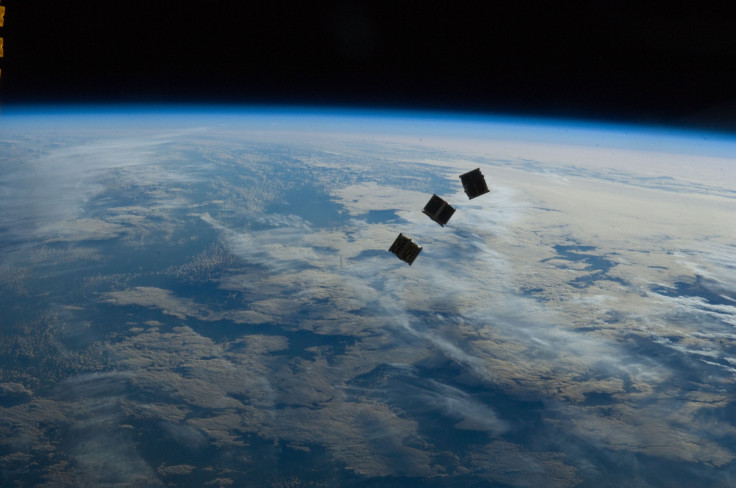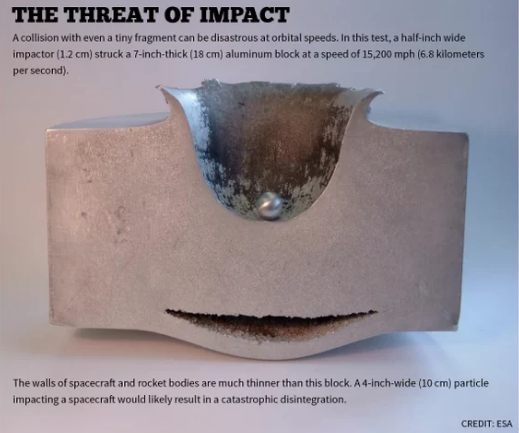Space Junk Could Cause Catastrophic Satellite Collisions, Making Space Travel Impossible

Space has become a literal dumping ground for the aerospace industry and it’s begun to pose a hazard to astronauts and missions. The exponential increase in space junk in recent years has made a collision of catastrophic proportions increasingly likely.
Experts at the European Conference on Space Debris last week said they feared something called Kessler Syndrome, or an unstoppable domino effect of collisions from space debris, could occur in low Earth orbit soon. More than 500,000 pieces of debris are being tracked as they orbit the Earth, while many millions more are so small they evade tracking technologies, according to NASA.
Read: Aliens Won't 'Treat Us Nicely,' Scientists Warn
Those pieces of space junk travel at speeds of up to 17,500 mph, turning even the smallest fragment into a lethal weapon. Kessler Syndrome, coined by NASA scientist Donald Kessler in 1978, could occur when a piece of space debris disintegrates another spacecraft into a smaller number of fragments, which would then hit another, setting off an unstoppable cascade of impacts. The domino effect would cause a whirling ring of debris that would render even the simplest space travel and satellite launches too dangerous.
“The greatest risk to space missions comes from non-trackable debris,” said Nicholas Johnson, NASA’s chief scientist for orbital debris.

The problem is set to get worse, thanks to advances in technology which have made satellites smaller and easier to launch. Inexpensive, tiny satellites called CubeSats have become increasingly popular, with India alone sending more than 100 into orbit recently. An estimated 12,000 more could make their way into space in the next few years.
Once a satellite makes it to space, it stays there until death and beyond. While international guidelines suggest removing space crafts from low-Earth orbit within 25 years of the end of their mission, only 60 percent of missions typically do so. With many millions of fragments hurtling just outside our atmosphere, a single collision could have catastrophic impacts on space travel and satellite technology.
Read: Astronomers Discover Planet Like Star Wars' Tatooine In Deep Space
The space industry has been surprisingly lucky when it comes to collisions, with few destructive collisions so far. In 2009, an out of commission Russian satellite destroyed a functional U.S. commercial satellite when it collided with it, launching at least 2,000 more pieces of debris into space. Another 3,000 pieces of space junk were added to the skies when China used a missile to destroy an old weather satellite in 2007.
A number of technologies have been proposed to alleviate the escalating space junk problem including a giant space net. None, so far, have been implemented.

© Copyright IBTimes 2024. All rights reserved.






















